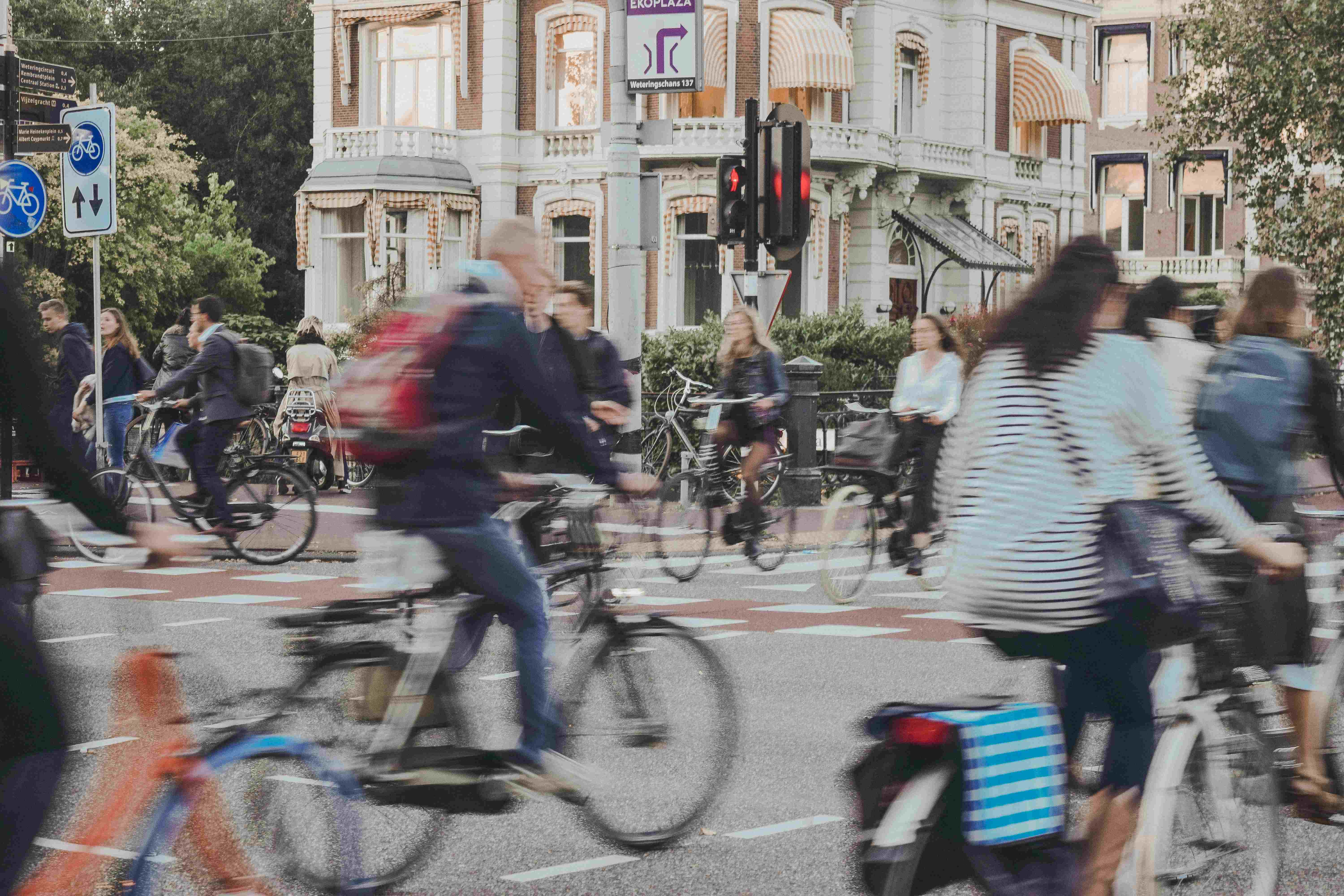
As the world becomes increasingly urbanized, city leaders urgently need better ways to ensure their cities can function and to enable residents and businesses to thrive.
For example, our transport and mobility systems literally pave the way to whether we can accept a job offer, choose the right school for our children, or access the health care we need. Transport and mobility systems also influence how easy - or not - it is to walk, cycle, or use other ways to move around in our daily lives.
Further, the urgency of the climate crisis means that city leaders are seeking to accelerate ways to reduce carbon emissions stemming from cities, particularly in the transport and built environment sectors.
And while innovations in cities, and particularly innovations in transport and mobility, have abounded in recent years, we need to ensure that innovative solutions promote equity and safety for all, and protect our planet’s resources for future generations.
To foster solution development in cities, in ways that both tap into the energy of innovators and ground solutions in real-world needs, we have found value in applying the open innovation challenge method.
City-based open innovation challenges draw on the philosophy that “good ideas can come from anywhere” and unlock routes to problem-solving that aren't typically found in local government procurement processes. For example, in the Climate Smart Cities Challenge, we found that challenges are a good way to invite innovators and problem-solvers who might not typically engage with city processes to focus their expertise to a city context.
In another example, WRI India in 2018 kicked off the Better Bus Challenge with the aim of co-creating innovation solutions for India’s bus systems. City and transport authorities, entrusted with delivering public services, gained a unique chance to tap into the technical know-how and expertise of private enterprises that have revolutionized the mobility sector with creative and cost-effective solutions. Amplified by matching federal funds, the Better Bus Challenge invited startups to collaborate with transit officials. The ensuing pilot projects in Mumbai, Karnataka and Bengaluru displayed encouraging early outcomes, showcasing improvements in transit service quality and commuter experiences.
In the context of the InoveMob Challenge, supported by the Toyota Mobility Foundation and WRI Brasil, cities and mayors across Brazil eagerly joined forces with the private sector to steer emerging “new mobility” modes towards outcomes that prioritize the public’s best interests—whether making roads safer, easing traffic congestion or improving the safety of women using public transit.
Challenges can also stimulate local governments to find new ways of working internally, in more agile ways than business-as-usual might typically allow. The most impactful challenges engage a broad spectrum of actors; for example, in the London Mayor’s Resilience Fund, the challenge process fostered co-design among not just the city agencies and the startup community and the innovator/startup community, but also the third sector and local stakeholders. In city-based challenges, we’ve found that direct access to city decision-makers, the chance to meet with stakeholders and end users, and permission to demonstrate a solution in the public realm are compelling to prospective entrants.
Open innovation challenges can be deployed in a number of ways to support cities to find new solutions to unsolved problems. But what are they and how can cities learn more?
Open innovation challenges are just that:
There are three crucial steps in developing an effective open innovation challenge in your city - by that, we mean a challenge that will foster the outcomes you want, and engage the right people and businesses to create those outcomes.
First, you need to identify and understand the problem or issue you’d like to address and who is affected by it. For now, we’ll assume you’ve done this step (but watch this space for another article coming soon on a great technique to identify and understand problems more deeply).
Next, you need to define your challenge statement, or the key “ask” you have to an open community of solvers. It should sum up in a sentence or two:
Remember it's not the same as a procurement exercise; rather, it is signaling a challenge that you want innovators to work on.
Examples of good challenge statements
Once you’ve defined this challenge, you need to issue the “call to innovators”, thinking through what support and incentives you need to put in place to enable innovation to thrive - for example, what data, stakeholders, permissions or funding needs to be put in place? Our practice guide has some useful tips for exploring what this could look like.
If you work for a city and would like to find out more, we’re running a free Challenge Lab on open innovation challenges as part of the Sustainable Cities Challenge, which offers cities the opportunity to host an open innovation challenge to solve local mobility challenges, with access to up to $3 million in funding from the Toyota Mobility Foundation and expertise and support delivering a challenge from us and World Resources Institute.
Sign up today and join us on Thursday 27th July 2023 or Wednesday 6th September. You can also drop us an email at [email protected] to find out more.
